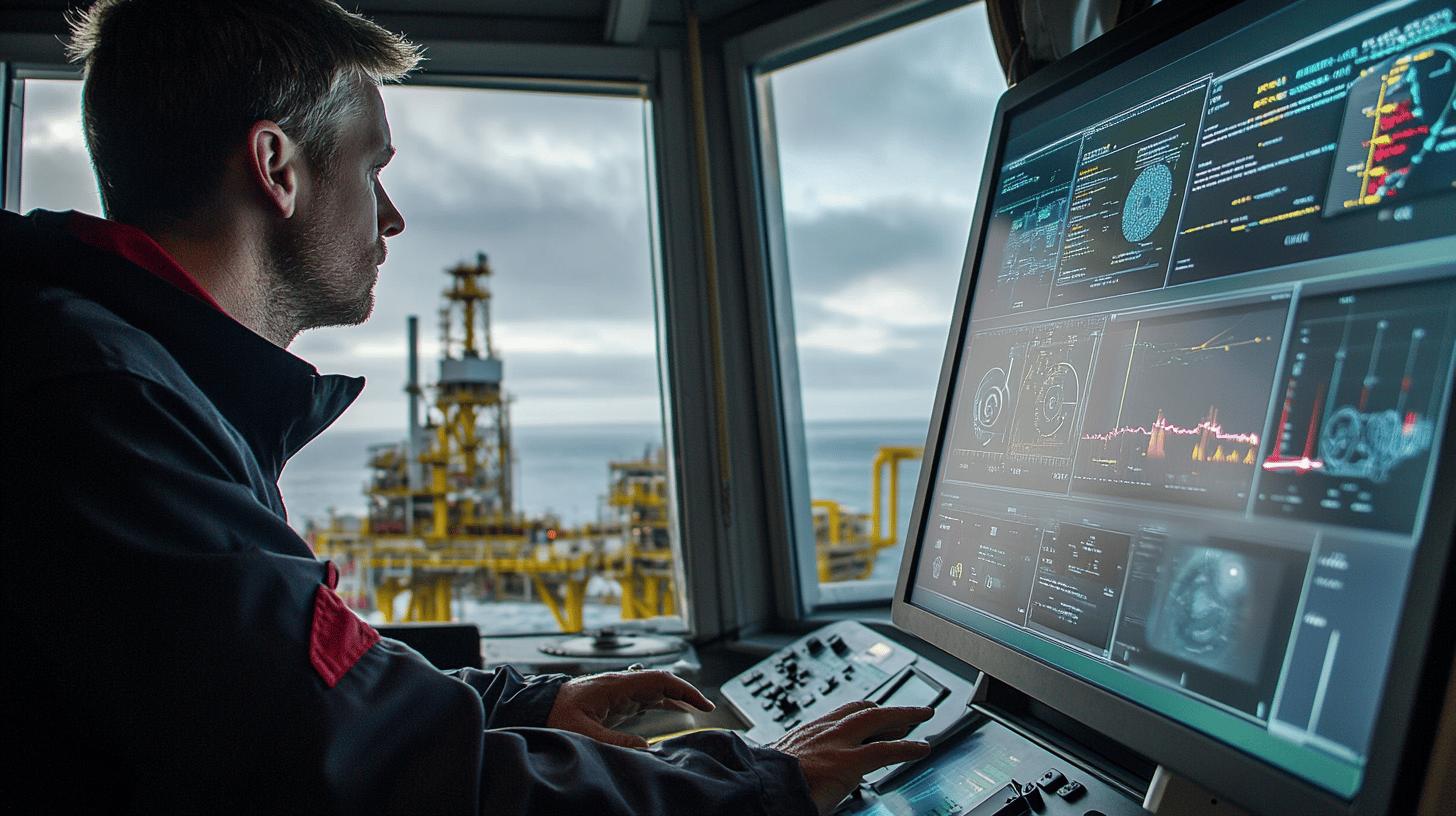
Continuous Improvement Programmes Boost Oil and Gas Compliance


Continuous Improvement Programmes Boost Oil and Gas Compliance

The Role of Continuous Improvement Programmes in Enhancing Environmental Compliance in Oil and Gas Production
Continuous improvement programmes are essential for tackling environmental compliance challenges in oil and gas production. These systematic strategies continuously refine processes to meet stringent environmental standards, while preventing the stagnation and non-compliance that comes from neglecting such initiatives.
"Effective continuous improvement isn't just about meeting regulations—it's about embedding sustainability into every operational decision to create lasting environmental and business benefits." Source: Environmental Management in Oil and Gas
These programmes focus primarily on three critical areas: emissions reduction, waste management, and energy efficiency. By identifying high-emission activities and implementing targeted strategies, companies can significantly reduce their environmental footprint while meeting international standards like ISO 14001.
The Three Pillars of Environmental Excellence

Emissions reduction represents the cornerstone of environmental compliance in the oil and gas sector. Companies implementing continuous improvement programmes can systematically identify and address emission sources through technologies like carbon capture systems and low-emission equipment.
Waste management initiatives also deliver impressive results by targeting inefficiencies in resource use and production processes. Many offshore operations now employ real-time monitoring tools to track waste outputs and make immediate operational adjustments, creating both environmental and financial benefits.
Energy efficiency programmes complete this trio by helping operators optimise consumption through advanced monitoring systems and renewable energy integration. As global sustainability targets become more demanding, these adjustments are increasingly becoming industry requirements rather than optional enhancements.
Transforming Compliance Through Digital Solutions
Q-Hub's digital transformation expertise reveals how technology integration is revolutionising environmental compliance in oil and gas. Modern QHSE software platforms centralise environmental data, automate compliance reporting, and provide real-time insights that were previously impossible to obtain.
Companies implementing these solutions typically experience:
- 90% reduction in time spent on environmental compliance reporting
- 65% improvement in early detection of potential environmental issues
- 40% decrease in administrative costs related to environmental management

The Scottish Leather Group's experience demonstrates this transformation in action. By implementing Q-Hub's compliance management platform, they unified their processes across multiple ISO standards, including environmental management systems. This digital approach eliminated paper-based inefficiencies while providing real-time visibility into environmental performance metrics.
Best Practices That Drive Measurable Results
Successful continuous improvement programmes share several key characteristics that drive their effectiveness. Transparency stands as perhaps the most critical factor—creating an environment where teams feel empowered to report issues and suggest improvements without fear of repercussions.
Continuous monitoring through advanced tools like IoT sensors provides real-time insights into emissions, waste levels, and energy consumption. These systems translate raw data into actionable intelligence that enables early intervention before compliance breaches occur.
Regular compliance audits function as operational health checks, uncovering process gaps and highlighting optimisation opportunities. When combined with automation technologies that streamline repetitive tasks like emissions reporting, companies can significantly reduce human error while freeing resources for strategic initiatives.
<table border="0"> <tr><th>Compliance Metric</th><th>Before Digital Transformation</th><th>After Q-Hub Implementation</th></tr> <tr><td>Environmental Audit Preparation Time</td><td>2-3 weeks</td><td>2-3 days</td></tr> <tr><td>Non-Conformance Resolution Time</td><td>30+ days</td><td>Under 10 days</td></tr> <tr><td>Environmental Reporting Accuracy</td><td>60-70%</td><td>95%+</td></tr> <tr><td>Visibility into Environmental KPIs</td><td>Monthly reports</td><td>Real-time dashboards</td></tr> </table>Overcoming Implementation Challenges
Despite their benefits, continuous improvement programmes often face significant hurdles. Constantly evolving regulations can leave companies struggling to update processes, while implementation costs and internal resistance to change create additional barriers.
Proactive regulatory engagement offers a powerful solution to compliance challenges. By conducting regular audits and participating in industry forums, companies can anticipate regulatory changes rather than merely reacting to them. This forward-looking approach transforms compliance from a burden into a competitive advantage.
Cost concerns can be addressed through strategic risk management techniques like lifecycle analysis and environmental risk assessment. These methods identify cost-effective opportunities for equipment upgrades or process improvements that deliver both compliance benefits and operational savings.
Key Strategies for Overcoming Resistance to Change
Strong leadership commitment is essential for overcoming resistance to environmental improvement initiatives. Leaders must actively champion these programmes and demonstrate their importance through consistent messaging and resource allocation.
Employee engagement programmes that incorporate training, feedback channels, and innovation incentives can transform resistance into active participation. When staff at all levels understand how environmental improvements benefit both the company and their individual roles, adoption rates significantly improve.
The Future Landscape of Environmental Compliance
The future of environmental compliance in oil and gas will be shaped by several emerging trends. Renewable energy integration is already transforming operations, with many facilities incorporating solar and wind power to reduce emissions. Carbon management strategies, including capture technologies and offset programmes, are becoming standard practice in response to international agreements like the Paris Accord.
Community engagement is evolving from a public relations activity into a core compliance strategy. Forward-thinking companies are involving local stakeholders in environmental decision-making, creating more effective and contextually appropriate solutions while building public trust.
Q-Hub's digital transformation expertise is helping oil and gas companies navigate this evolving landscape through customised QHSE software solutions. By centralising environmental data, automating compliance processes, and providing real-time performance visibility, these platforms enable companies to not only meet current requirements but stay ahead of emerging environmental standards.
As regulatory demands and stakeholder expectations continue to intensify, continuous improvement programmes supported by robust digital tools will become increasingly vital. Companies that embrace this approach now won't just achieve compliance—they'll secure a competitive advantage in an industry where environmental performance increasingly influences business success.
Ready to transform your environmental compliance approach with Q-Hub? Discover how our tailored digital solutions can streamline your continuous improvement programmes while ensuring regulatory compliance and operational excellence.
Start using Q-Hub today
- Manage compliance in one place
- Streamline your teams and tasks
- Use Q-Hub free for 30 days






